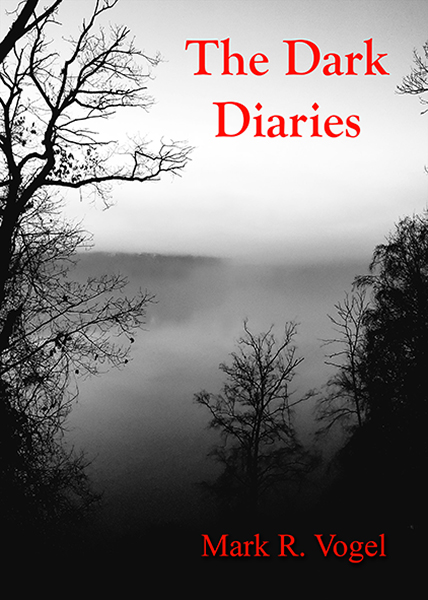Warning: The following is a literal “review” of Sean Cunningham’s Friday the 13th in that it contains spoilers.
Regardless of one’s opinion concerning the Friday the 13th or its sequels, one is forced to admire director Sean Cunningham and producer Steve Miner for the sole fact that, unlike many of their horror peers, they wear their exploitative label proudly upon their sleeves. Instead of attempting to proffer their feature as the next Halloween, which their work is obviously modeled after, they instead (and gladly) declare that they aren’t wearing any clothes (except their sleeves . . . ). As such, those responsible for Friday the 13th avail themselves to a brutal honesty which their audience can appreciate and, in so doing, inadvertently creates a horror icon which would render hundreds of millions of dollars as a consequence.
In many respects, Cunningham’s work set the standard for the slasher genre in lieu of the fact that Friday the 13th’s genesis is squarely rooted in two other preceding films: John Carpenter’s Halloween and Alfred Hitchcock’s Psycho. While the former’s influence is quite obvious via Friday’s POV shots, holiday-esque timeframe, unspoken Freudian legislation (a potential victim finds sanctity in a symbolic womb, i.e. shed), and cautionary forebodings in the mode of Puritanical ethics (sin–be it in the form of premarital sex, drugs, or flagrant irrelevance for life–is rewarded with death), the latter’s sway, outside of Harry Manfredini’s plagiaristic score, isn’t as glaring. We open with what we are to presume is our female protagonist, Annie (Robbi Morgan), only to see her murdered shortly thereafter. The authorities in Friday the 13th, as in much of the Master of Suspense’s canon, are either in absentia or frustratingly ineffective. Whereas Norman Bates’s mother speaks through him in Psycho, the converse occurs in Friday the 13th, a film in which numerous red herrings–all but a Hitchcockian trademark–go all but unnoticed amid the lethargic pacing, gore, and shallow characterization.
New Jersey, 1957: Twenty-two years after Camp Crystal Lake is established, the summer getaway suffers a fatality as one of its boarders drowns. The following year, two counselors are gruesomely murdered and, four years hence, a fire overtakes the site, causing it to close its doors indefinitely. Seventeen years after the fact, now 1979, one Steven Christy (Peter Brouwer) reopens the camp with the aide of several counselors. However, before the campers arrive, the woodland estate’s employees begin dying grisly deaths.
It is with this, a firmly established mythos (much like a staple haunted house narrative), that Cunningham sets the groundwork for what is more properly labeled a thriller for, though perhaps not as controlled as it might have been, Friday the 13th is nevertheless a story in which the viewer is constantly challenged to ascertain the killer’s identity. Thus, in all truth, though the prototypical slasher, the murderers which take place are secondary in this respect. Cleverly, with his agenda put forth, the director then incriminates a handful of characters and, upon implicating one figure, he quickly kills him or her, thereby keeping his audience in suspense as he proceeds involving the next soon-to-be-victim. This cinematic game of cat-and-mouse comes complete with a set of red herrings. For example, early in the work, we witness one counselor, Ned Rubenstein (Mark Nelson), who exhibits prime marksmanship in respect to archery before the killer uses an arrow to slay one of his victims. Steven mysteriously disappears into town before the counselors begin dying. Suspiciously, during a game of strip Monopoly, Alice Hardy (Adrienne King) declares that she has drawn “first blood.” Thus, when we match the vehicle which was being driven by the murderer when Annie was slain with the jeep that Pamela Voorhees (Betsy Palmer) arrives in at the end of the feature, we assume nothing given all the false leads which came before, especially when a female in her mid-forties appears from the driver’s seat. As such, when the assassin’s identity is revealed, it is a truly daunting experience as it sits upon the Parthenon of jaw-dropping finales (sorry guys, I’m honest with my assessment of cinema history . . . ).
Granted, a large portion of anything of interest which divests itself in a self-confessed work of unrepentant exploitation is more than likely haphazard, we are nonetheless left to reconcile with what appears onscreen. As such, such aesthetic ironies occur in the form of a Shakespearian fool, Crazy Ralph (Walt Gorney), who attempts to forewarn everyone of an ensuing tragedy, and the film taking place in a Bardian day (24 hours). Moreover, at famed makeup effects artist Tom Savini’s suggestion, Friday the 13th’s Carrie-esque finale presents the viewer with a conundrum: Though the Final Female, Alice, is issued as having dreamed or hallucinated Jason’s resurrection, one Sergeant Tierney (Ronn Carroll) admits, “M’am, we didn’t find any boy” (thus, we do not know if Jason’s body is still missing or merely a figment of Alice’s imagination–Jason would have been 34 during this time while the personage seen dragging her out of the boat is obviously much younger, the opaqueness of which isn’t remedied any by the previous statement that Alice had to be “pulled” out of the lake, for such could be taken literally or figuratively). This, atop the fact that we never actually see Pamela kill anyone as male hands appear in each homicidal sequence (yes, undoubtedly sloppy filmmaking done on a miniscule budget but, again, we are left to contend with what is on the celluloid . . . ), the killer’s identity therefore remains slyly ambiguous. This theory is further supported by the fact that the voice which Pamela (as well as the viewer) hears beckoning to “Kill her” is a child’s, one which she vainly attempts to imitate. Thus, the ease by which the filmmakers could have dubbed the child’s voice suggests that the scenario may well be intentional.
Furthermore, Cunningham’s film cannot be as easily dismissed as being as technically inept as many mainstream critics would like it to be. For instance, in order to keep from further obfuscating his stock characters, the director has the presence of mind to place them in different colored rain slickers for easy identification as, retrospectively, we realize how well structured the feature is as the first victim, the camp’s new cook–Annie–happens to have been hired to do the same job as Pamela decades prior. Lastly, in the flashback sequence which opens the picture, we see “I Like Ike” graffitied above a fireplace, which would have been temporally accurate given the time in which the first series of murders are specified as having taken place for, indeed, Dwight Eisenhower was president from 1953-1961. Such attention to detail is atypical of standard B-movie fare just as the feature, one of the first of its kind after Tobe Hooper’s The Texas Chain Saw Massacre, usurps the vestal safe haven of rural America as the filmmaker sets his work in the most innocent of locales–a summer camp.
Sean Cunningham’s charter installment in the Friday the 13th series is often mootly cited as being the production which even its cast admits to have been only a financial exercise and nothing else (Betsy Palmer famously referred to the script as “a piece of shit.”). We even hear such flippant commentary regarding the film as “The feature which premiered Kevin Bacon’s ass.” However, regardless of the intents and purposes behind a work, the viewer is nonetheless last to reconcile what appears onscreen and, as such, when one takes into account of the influence (the feature is now the archetypal slasher feature), impact (Friday the 13th returned its half-a-million-dollar budget almost 80 times), and–frequently (albeit intentionally) overlooked–merits, one is left with few legitimate complaints outside the work’s poor cinematography, negligent characterization, and languid pacing. Talk about your happy mistakes . . . . Which leaves one wondering how the feature would have been received had it veiled the bloodshed and excluded its gratuitous climax (for, natch, it doesn’t harbor the slasher requisite of arbitrary nudity)?
Trivia tidbit: Friday the 13th opened the same day at Stanley Kubrick’s The Shining.
-Egregious Gurnow
- Interview with J.R. Bookwalter - January 22, 2015
- Interview with Andrew J. Rausch - January 22, 2015
- Interview with Rick Popko and Dan West - January 22, 2015
- Interview with Director Stevan Mena (Malevolence) - January 22, 2015
- Interview with Screenwriter Jeffery Reddick (Day of the Dead 2007) - January 22, 2015
- Teleconference interview with Mick Garris (Masters of Horror) - January 22, 2015
- A Day at the Morgue with Corri English (Unrest) - January 22, 2015
- Interview with Writer/Director Nacho Cerda (The Abandoned, Aftermath) - January 22, 2015
- Interview with Actress Thora Birch (Dark Corners, The Hole, American Beauty) - January 22, 2015
- Interview with Actor Jason Behr, Plus Skinwalkers Press Coverage - January 22, 2015


